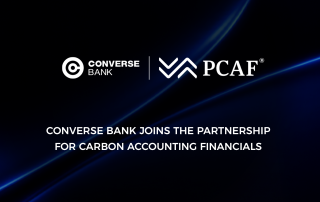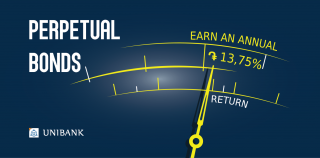
Exclusive interview with American experts: “There is a problem in Teghut, and we had warned about that; there is no problem at Amulsar, and we also state this”

Yesterday Vallex Group issued a press release stating that starting from July 2018, the Government of the Republic of Armenia had been warned that the Teghut Tailing Dump is at risk of collapse and can’t be re-exploited. In essence, yesterday Vallex Group issued an exclusive statement the tailing dump of the Teghut Mine might collapse at any moment and take the lives of people. International experts have released reports on this. This is a real danger that the Government of the Republic of Armenia has overlooked and allowed re-exploitation of the Teghut Mine.
Alongside this, the roads leading to the non-existing Amulsar mine have been closed for a year, and this has only hindered construction which, even theoretically speaking, didn’t pose any risk. The government has been conducting expert examinations at Amulsar, trying to detect theoretical dangers, but the communities surrounding Teghut Mine face a practical danger that Vallex Group has been sounding the alarm about, and it seems as though the government and the relevant ministries are intentionally overlooking this.
What is also interesting is the relative passivity of the community of environmentalists amid the mad struggle against Amulsar. Amid various types of protests against Amulsar, in the case of the danger posed to the collapsing Teghut Tailing Dump, the community of activists only limited themselves to disseminating the interview with the specialist of Global Resource Engineering. Moreover, when another specialist of the company was giving a positive conclusion on Amulsar, the activists accused him of being a “sellout”.
In response to the article “ “Environmental” Pharisaism” posted on 168.am last week, some activists said the specialists of the same organization can have differing views.
To dispel all doubts, 168.am wrote questions and sent them to Global Resource Engineering and received answers from Larry Breckenridge, who has conducted a study on the Amulsar project, and from David Hallman, who has conducted a study in Teghut. The only thing left to do is to wait and see if those same activists will disseminate this interview or not.
-Amulsar project has been halted by activists for over a year now. Your company was one of the expert organizations that worked on the environmental impact assessment of Amulsar and designed the project to meet certain environmental standards, as you have said previously.. How do you assess the situation around the project and would you still say that Amulsar is a safe project?
-GRE has been involved with Amulsar since 2014. We have been active participant’s in environmental studies related to water quality and water quality impacts. We can say with confidence that the mitigation measures proposed in the 2016 ESIA are sufficient to protect against water quality degradation, both locally and regionally. Amulsar will be a safe project. There are hundreds of safe gold mining projects across the world, and the challenges that Amulsar faces (the use of cyanide, and the potential for acid rock drainage) are common. Because they are common, the management tools we have to manage the risks are well-understood and robust.
-What do you think of this new environmental audit of the Amulsar project. Do you think it may challenge the quality of your work?
-It is important to remember that the ESIA was approved by international 3rd party auditors prior to the granting of funding to construct. This work has already withstood the careful consideration of some of the most-experienced firms in the field of mine environmental impact assessment. The current audit will re-do the prior audit, but with a less-experienced firm. It is probable that they will challenge the quality of our work, but we are confident in the strength of our scientific arguments that whatever they find can be discussed and addressed.
-Would you say Amulsar design meets international standards and the risks are under control?
-Yes, Amulsar is designed to modern standards. For example, it is the first mine to conform to the International Cyanide Code prior to construction and production. This is the highest-level of cyanide management and control that a project can achieve. The ESIA conformed to the Equator Principals for the creation of Environmental Impact Assessments. This validates and verifies that Amulsar is designed to modern standards.
The international standards wehave mentioned above are DESGINED to mitigate the risk of the project. The standards are created specifically to build a framework and a set of protocols for mining companies to characterize, evaluate, and mitigate the risks of the project.
-Your company has worked both on the Amulsar and on Teghut projects. Recently Mr Hallman gave an interview in the Armenian media, expressing his concern with the tailings dam of Teghut that you had done assessment of previously. Many activists have shared this article, while previously when your company gave positive assessment of the Amulsar project, they would accuse you of bias. So when the assessment of a project is negative, the environmental community trusts you, when it’s positive- in case of Amulsar, they accuse you of bias. How do you deal with these double standards and is this a common thing in other countries you have worked in?
-The accusation of bias is frustrating. Global Resource Engineering is committed to science. When the scientific evidence shows that a project is risky, we say something – as we have done at Teghout. When the science says that a project has correctly managed the risk, we say so, as we have at Amulsar.
Teghout is simply an unsafe tailings dam. We saw the warning signs, we worked with Vallex to conduct a drilling and sampling program, and we performed an industry-standard scientific evaluation. This showed that the use of the dam should be suspended until such time as the existing structure could be stabilized. This is not a personal opinion, or a biased opinion, it is a scientific fact.
Conversely, the science at Amulsar showed the contrary. Modest acid-rock drainage risk could be controlled, there is no tailings dam at Amulsar (they use a type of processing that does not create mine tailings), and they have the ability to carefully manage their impacts.
As Professional Engineers in the United States, and as Qualified Persons in Canada, the engineers of Global Resource Engineering are compelled by law and ethics, under rules that are enforceable by penalties, jail, or the deprivation of our license, to act ethically and to present the results of our studies truthfully. This is what has brought us recently to speak with the Armenian press.
-Do you think Teghut issue is fixable?
-Yes, Teghout is fixable. The solution is simple. One must start a new dam in the ample space upstream from the existing dam. This will allow for mine production (and jobs). Meanwhile, the existing dam can be mitigated.
-Do you think mining can be done safely and why is there such a negative perception of mining?
-Of course mining can be done safely. We do it in the United States and around the world. In Nevada, there are many gold mines (using cyanide) which safely operate in sensitive areas. Additionally, I(David Hallman) has been involved with mining projects which operate safely next to sensitive trout streams in the Northwest of the US. . Finally, in Chile, mining is the backbone of a successful nation that has balanced tourism, mining and agriculture.
However, the negative perception of mining has been earned by historic mining that used sub-standard practices for the control and management of mine wastes. We traveled a lot around Armenia, and have seen existing and historic mining projects that fail to meet international standards. We have seen poorly managed mine wastes, ARD, and unsafe dams.
This year, GRE established a branch office expressly for the purpose of bringing modern mining practices to Armenia. Mitigating the risks of mining requires a 21st century toolbox of engineering skills and management methods. These methods are the solution Armenia requires – they are the key to make a thriving mining industry without the historic mining disasters. It is unfortunate that Amulsar, a champion of these methods, is mired down in unnecessary protests. It is deeply unjust and misguided.
ARMINE VARDANYAN
P.S.: The answers were jointly sent to 168.am by:
Larry Breckenridge, Professional Environmental Engineer
Branch Manager, Global Resource Engineering Armenia,
20+ years of experience in managing mine water and mine environmental issues.
Project Manager of GRE’s work at Amulsar.
Dave Hallman, Professional Geologist, Professional Geotechnical Engineer
30+ years managing mine wastes and designing tailings dams.
Lead Engineer on GRE’s work at Teghout.























